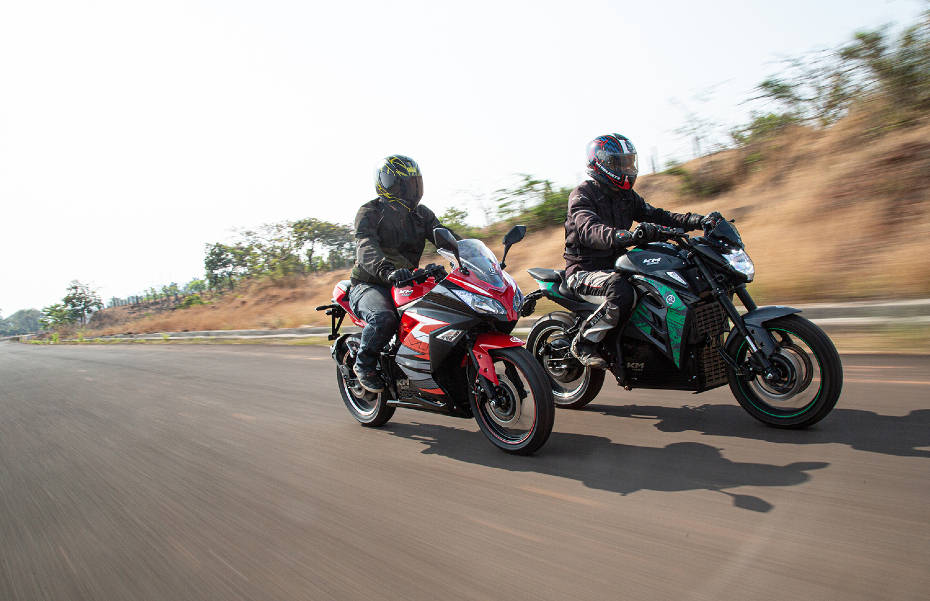Kabira KM 3000 And KM 4000: Review In Pictures
Published On February 25, 2021 18:00 IST
By Pratik Bhanushali for Kabira Mobility KM3000
- 5948 Views
Has Kabira really pushed the envelope of electric motorcycles?

The EV segment has welcomed a couple of new members with the launch of the Kabira KM 3000 and the KM 4000 electric motorcycles. While both look sporty, do they have the performance to match their looks? To find out, our team visited Kabira Mobility’s headquarters in Goa and had a go on the brand’s latest offerings.

The Kabira KM 3000 borrows the Ninja 300’s looks while the KM 4000 is a mix of the Yamaha FZ V2’s front and the Kawasaki Z1000’s body.

The KM 4000’s 8kW motor churns out 5kW of continuous power and the KM 3000’s 6kW motor makes 3.5kW of continuous power. Yep, you read that right, the faired bike, which is usually assumed to be more performance-oriented, makes less power than the naked KM 4000.

While the brand claims a top speed of 120kmph, the KM 4000 sprinted to 88kmph with ease. But speeds above that would require a long stretch of road.

The KM 3000, on the other hand, managed to hit a top speed of about 82kmph, a far cry from its claimed 100kmph.

Kabira claims a range of 150km from the naked’s 4.4kWh lithium-ion battery in Eco Mode and a probable 90km in the Sport mode. However, under load, the bike manages to deliver only around 50 percent of the claimed figure.

The KM 3000 houses a similar battery pack as the KM 4000, but still gets a claimed range of only 120km in Eco mode.

The ergonomics on the KM 4000 are a bit confusing. The narrow handlebar with its upward-inclined position and the rear-set footpegs make for a rather unfamiliar rider triangle.

As on the KM 3000, the seating position is quite accommodating. The neutrally placed handlebar and the slightly rear-set footpeg offer enough room to move around the saddle.

Adding to the struggles on the KM 4000 is the suspension setup. The USD fork up front has more than enough travel all the time and the setup is very soft. Thanks to the battery pack and hub motor position, the rear shock ends up with the maximum load.

Similarly, on the KM 3000, the suspension functioned just fine, apart from the front staying compressed at times. There’s nothing a little jolt can’t fix, though.

When it comes to charging modes, the bikes get two: Eco and Boost. The former helps you charge the battery to 80 percent in 2 hours and 50 minutes while the latter does that in just 50 minutes.

One cannot overlook the fact that Kabira really needs to amp-up the build quality of both the bikes. Poorly torqued bolts, cheap plastic quality, and paint chipping off are just a handful of issues you’d easily notice.

Last but not least, the braking hardware is nowhere near impressive. Our team even saw the callipers bolts falling off under hard braking.

Kabira has priced the KM 3000 at Rs 1,26,990 and the KM 4000 at Rs 1,36,990 (ex-showroom Goa). Considering our experience with them, both bikes need major fixing before we can recommend them.
